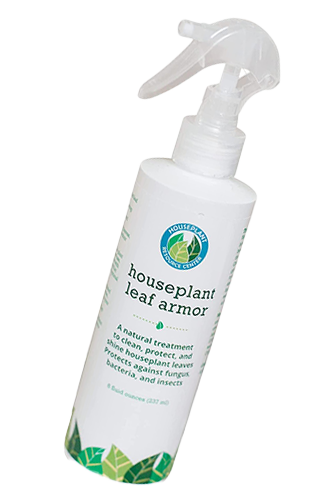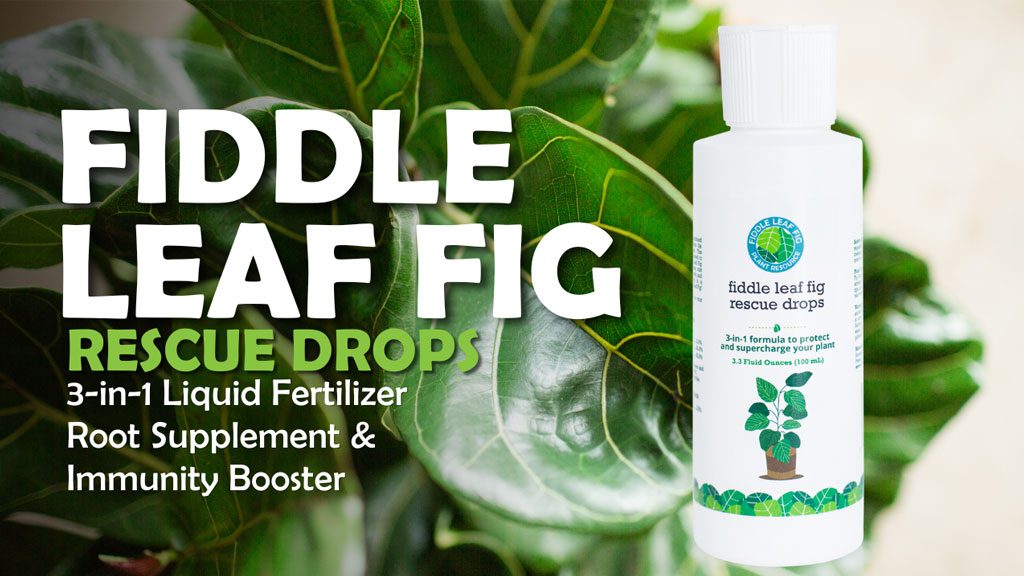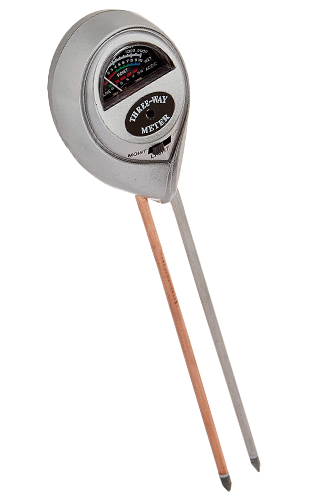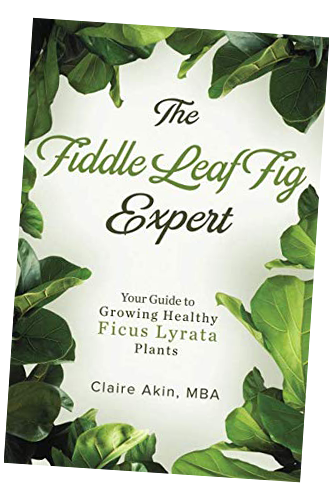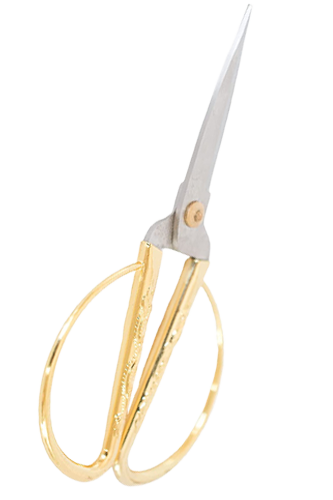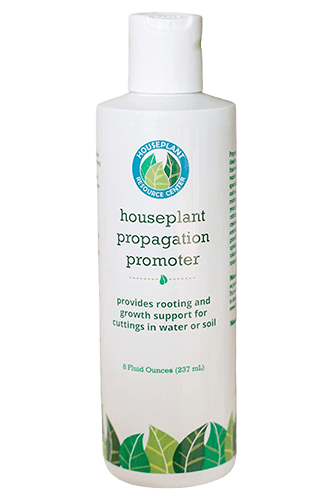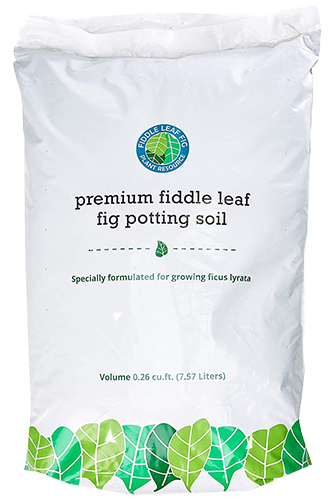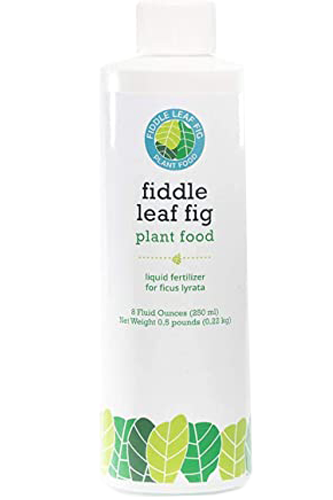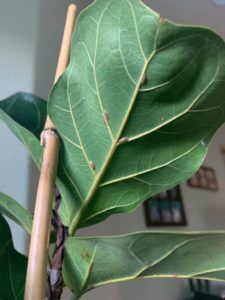
Most fiddle leaf fig owners are well aware of the more pervasive pests that can plague our precious fiddles, but there’s another insect that many plant parents overlook: scale. Yes, there can be scale on fiddle leaf figs.
This isn’t a super common pest for fiddle leaf figs (not as common as mealybugs and spider mites, anyway), but it can happen. So we want you to be ready!
(Fun fact: Mealybugs are actually a species of scale, but they have legs and are a lot easier to identify!)
So what on earth is scale, anyway?
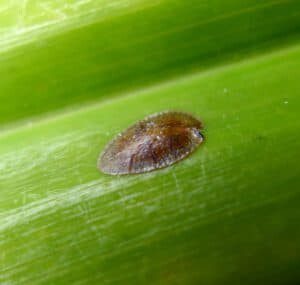
Scale is a type of insect that can be tricky to get rid of once they infect your plant.
There are actually thousands of different species, but most don’t have legs and will look like small brown bumps.
Most species of scale will park themselves on a leaf or stem and create a hard shell to hide under. The female will lay her eggs under the shell, which causes the infestation to spread. They may even spread to other plants!
Different species of scale might also produce a clear, sticky substance called “honeydew” which can attract ants, gnats, and flies, and even promote fungal growth.
How to Spot Scale on Fiddle Leaf Figs
At first, it’s hard to tell that these are insects at all because they look like smooth, round, brown bumps.
These insects attach to leaves, stems, and even the trunk of your fiddle leaf fig and suck sap out of them. These insects don’t really move, so it’s easy to overlook them until your plant starts showing signs that it’s unhappy like yellowing leaves, stunted growth, etc.
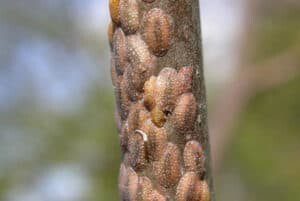
Some species of scale can also look like white bumps.
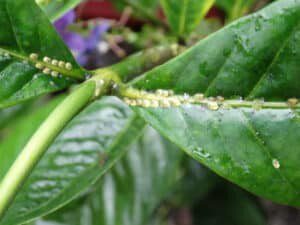
If left untreated, scale can stunt your plant’s growth and eventually kill it.
How to Treat Scale on Fiddle Leaf Figs
As with all issues that affect fiddle leaf figs, it’s best to treat this early. Scale is far easier to treat if the infestation is light.
If you notice scale on your fiddle leaf fig (or any of your plants!), try these four tips:
Step 1: Quarantine the plant.
Scale can easily spread from plant to plant, so move the infected plant far away from your other houseplants to prevent spreading.
Step 2: Pick them off.
If there are only a few scale spots here and there, you can usually pick them off without too much trouble. Just carefully remove them by hand or with a toothpick.
If your infestation is severe, you may have to use more drastic measures.
Step 3: Treat with Houseplant Leaf Armor (or alcohol or neem oil).
Use our Houseplant Leaf Armor, designed for houseplants to protect against insects, bacteria, and fungus. This product works just like neem oil but without the unpleasant smell (As an added bonus, it also cleans and adds shine to your houseplant’s leaves.) Dip a cotton swab in and dab a little on each scale, which can smother and poison the insects. This works well for light to moderate infestations.
Step 4: Prune.
If your infestation is more severe or if the other measures aren’t helping, it’s time to remove infected parts of the plant. With a pair of clean, sharp pruning shears like these, prune off any infected leaves or stems, and even part of the trunk if necessary (cutting off the trunk may actually encourage growth once the tree recovers!)
Bonus Tip: Release the ladybugs!

Ladybugs are natural predators of many harmful insects, including scale. You can order ladybugs online and let them loose on your fiddle to eat up any lingering pests.
There are pros and cons to this method, so make sure to read our article on that here.
Pest infestations don’t have to mean the end for your fiddle leaf fig! The best way to deal with pests is to regularly inspect your plants for actual insects and signs of insects like small dots, webbing, or “honeydew.”
To learn more about getting rid of pests, check out our Ultimate Guide to Fiddle Leaf Fig Insect Problems!
Inspect regularly to stop infestations before they start!
Grab the Essentials for Your Fiddle Leaf Fig:
- Premium Fiddle Leaf Fig Potting Soil
- Fiddle Leaf Fig Plant Food
- Root Rot Treatment
- Houseplant Leaf Armor to protect against insects, bacteria, and fungus (As an added bonus, it also cleans and adds shine to your plant’s leaves!)
- Moisture meter to always know when your plant is thirsty.
To learn more:
- Sign up for our free Fiddle Leaf Fig Care 101 Webinar for advanced fiddle leaf fig care.
- Make sure you’re subscribed to our newsletter.
- Read The Fiddle Leaf Fig Expert, your complete guide to growing healthy fiddle leaf fig plants. The book is available in full-color paperback or Kindle edition on Amazon now!
- Click to join our community on Facebook: Fiddle Leaf Fig Plant Resource Group.


